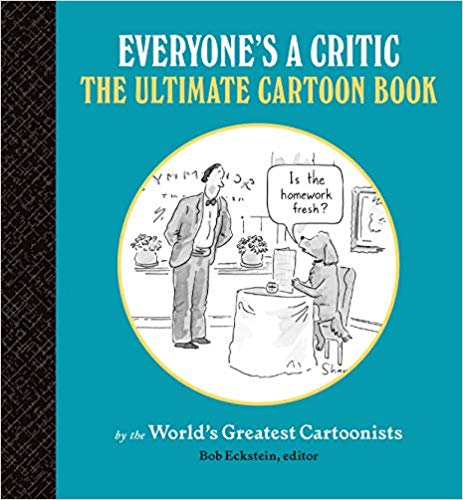 Bob Eckstein has been a New Yorker cartoonist since 2007. His new cartoon collection, Everyone’s A Critic, comes out Oct. 22nd and includes many of the esteemed cartoonists from CartoonStock. We talked with Bob about his journey from illustrator to writer to cartoonist and the ways he continues to bring those talents together today.
Bob Eckstein has been a New Yorker cartoonist since 2007. His new cartoon collection, Everyone’s A Critic, comes out Oct. 22nd and includes many of the esteemed cartoonists from CartoonStock. We talked with Bob about his journey from illustrator to writer to cartoonist and the ways he continues to bring those talents together today.
How did you get your start in cartooning? You promised me it wasn’t a cookie-cutter answer.
I think my story of how I got into cartooning IS different than most. I started very late being interested in gag cartoons or drawing them—I always hear cartoonists say they drew all the time as a kid—and only got into the New Yorker on a dare from a friend, cartoon great Sam Gross (I just had lunch with a moment ago and we were discussing the old days). The old days for me was 2007 when he invited me to the New Yorker lunch for my birthday. I had a great time at this NYer lunch. There was Gahan Wilson, Leo Cullum and other cartoon giants (I had initially met them and Sam from my days at Playboy where I briefly ghost-wrote Little Annie Fanny). Also the French food was very good. The way I remember it, I asked if I could come back someday and Sam said sure but that I have to return with cartoon sketches to show. He liked my work I guess. I wasn’t able to come up with ten ideas in a week but did show up weeks later with a batch (cartoonist’s slang for a pile of cartoons to pitch).
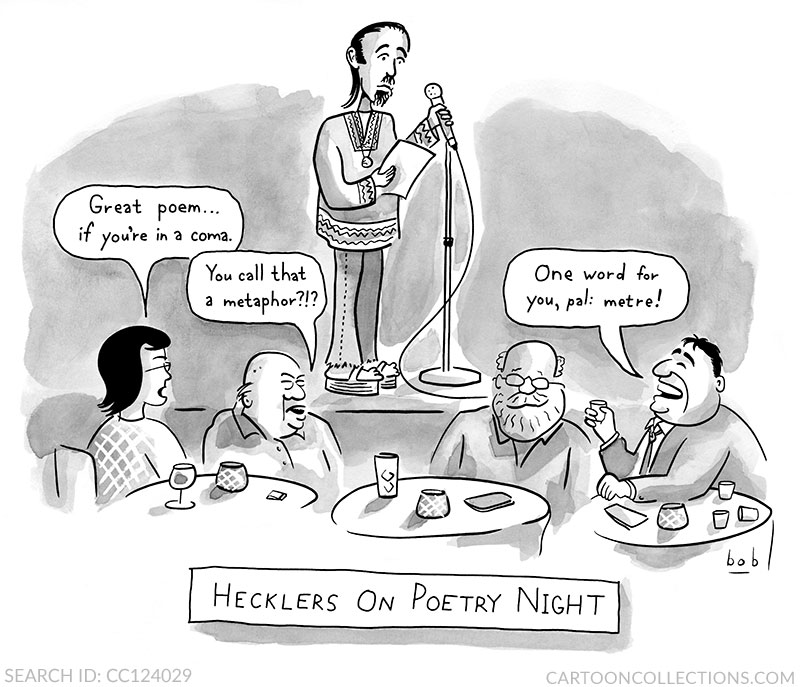 Sam introduced me to Bob Mankoff, the Cartoon Editor at the time, and Bob purchased the first cartoon I drew. At the time, unaware of the process at the magazine, I was disappointed having sold just one. I wrongly assumed that the dozen people in the waiting room consisted of the whole cartoon pool and that everyone who submitted sold multiple cartoons. I quickly learned not only how hard it was to get in but after six months later still waiting to sell my second cartoon, how it was beginner’s luck for me. Meanwhile I did learn what other markets existed and I got enough encouragement to actually become a cartoonist––the first two years I was cartooning I sold about four hundred cartoons and was nominated twice in a row, Gag Cartoonist of the Year––so I did focus on that for awhile.
Sam introduced me to Bob Mankoff, the Cartoon Editor at the time, and Bob purchased the first cartoon I drew. At the time, unaware of the process at the magazine, I was disappointed having sold just one. I wrongly assumed that the dozen people in the waiting room consisted of the whole cartoon pool and that everyone who submitted sold multiple cartoons. I quickly learned not only how hard it was to get in but after six months later still waiting to sell my second cartoon, how it was beginner’s luck for me. Meanwhile I did learn what other markets existed and I got enough encouragement to actually become a cartoonist––the first two years I was cartooning I sold about four hundred cartoons and was nominated twice in a row, Gag Cartoonist of the Year––so I did focus on that for awhile.
So you were a writer first? Or an illustrator first?
I was an illustrator first. I went to Pratt Institute, tried animation and it was too much work. Then I majored in Illustration (after trying Photography and unable to distinguish myself from the crowd) which I was doing earlier anyway, sneaking in classes when I was supposed to be a senior in high school. I was asked to teach illustration there when I graduated. I then taught at School of Visual Arts for many years. But I did illustration work starting as a teenager. My first big piece was a full page in The New York Times magazine while in college and then I did the back page of the Times’ Book Review. I quickly learned that there was no way I could make a lot just illustrating for magazines and newspapers.
From the beginning I always insisted on either illustrating my own work or submitting ideas already illustrated. Plus I thought I could write the stories funnier than what I was given to illustrate. I realize this was totally presumptuous but I was just a kid. But I was a columnist for a few places including New York Newsday, TimeOut New York and The Village Voice and major contributor for SPY. By the way, I’m working right now on my second piece for the back page of the Book Review, thirty five years later, and for almost the same rate, so that’s how much I’ve grown. Zero.
I think that says more pay rates about the publishing industry than your skills. And you’ve learned a lot, right?
Yes, I did since learn a lot. I learned that switching over to become a cartoonist was not the smartest business move and learned how much hard work it is to produce quality cartoons. I learned how much better the top tier of cartoonists are and realize I still don’t put in that time required. I never disciplined myself. I have studied all the old New Yorker cartoons and I know cartoons inside and out memory-wise but I still haven’t put in the time and sweat equity I should. I instead got into books (I’m finishing my seventh), I teach (writing and drawing at NYU), do speaking engagements frequently, write humor for different publications and I have been working on TV shows, all of which have seem to take up every waking minute.
When I hear other cartoonists share their schedule and demonstrate their work ethic, I feel I have no right to complain about getting rejections, even though I do complain. I get A LOT of cartoons sent to me each week. Many cartoonists share with me their cartoon batches and I have been considered by some as a “cartoon whisperer” and get asked for feedback. But I see a lot of excellent work that humbles my output cartoon-wise. I’m lucky to be able to call many of the world’s greatest cartoonists my friends.
What was your publishing journey from The Illustrated History of the Snowman to Footnotes From the World’s Greatest Bookstores to the series of cartoon books by ‘the world’s greatest cartoonists’?
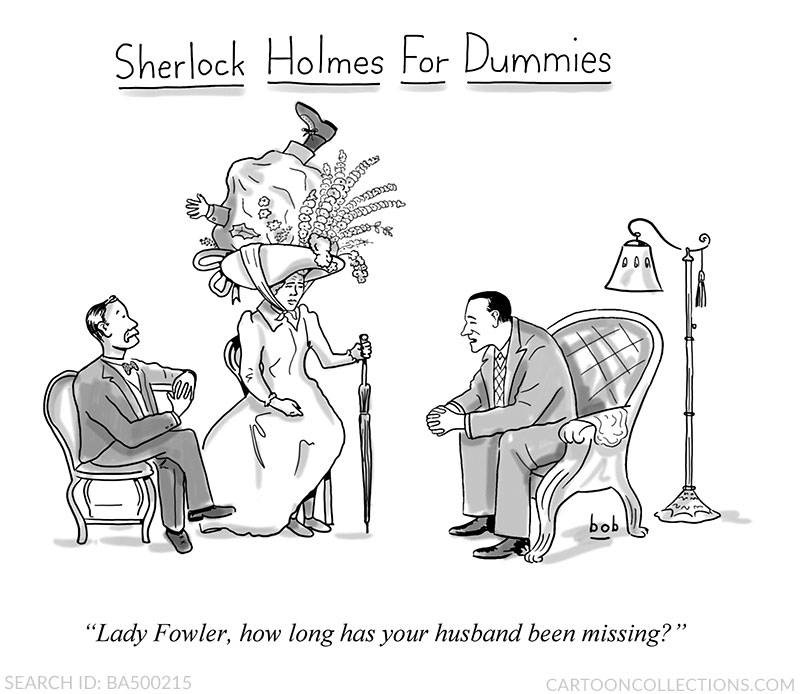 It was my wife who convinced me to follow my obsession with snow and write a book. Publishers and agents had been asking me if I was writing a book but didn’t know what I should do. I was obsessed with Sherlock Holmes but I didn’t want to write a crime mystery so I chose to write about who made the first snowman. That started my personal quest, my Holy Grail, to find out when man first made snowmen. Over seven years I spent a small fortune researching around the world. I updated that book recently, crafting a lush, full-color edition called The Illustrated History of the Snowman. A screenplay is being produced now based on the book.
It was my wife who convinced me to follow my obsession with snow and write a book. Publishers and agents had been asking me if I was writing a book but didn’t know what I should do. I was obsessed with Sherlock Holmes but I didn’t want to write a crime mystery so I chose to write about who made the first snowman. That started my personal quest, my Holy Grail, to find out when man first made snowmen. Over seven years I spent a small fortune researching around the world. I updated that book recently, crafting a lush, full-color edition called The Illustrated History of the Snowman. A screenplay is being produced now based on the book.
In 2016 I wrote a piece for The New Yorker about endangered bookstores that went viral when it ran. By the afternoon my agent said Penguin Random House had offered me a book deal to expand it into a book. At the time I just thought it was a personal opportunity. After talking with bookstore owners for two years, I became emotionally invested in raising awareness for independent bookstores; it became an obsession. 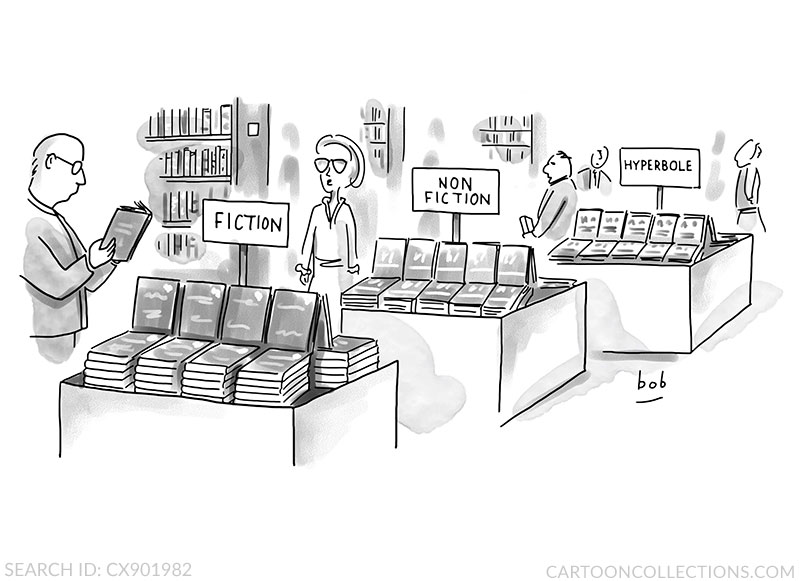 I did dozens of TV and radio appearances and wrote many OpEds on the topic (that’s another TV project I’ve been busy with). The book is a Times bestseller and popular in different countries. Bookstores wanted to know what my next book would be and I decided it would be another book about them; a light-hearted collection of cartoons about bookstores, while at the same time a chance to showcase the cartoonists I feel indebted to, which became The Ultimate Cartoon Book of Book Cartoons. The publisher, Princeton Architectural Press, has been great to work with and agreed to try a sequel, especially since we have some momentum and the first book is so beautiful. Together we tried to think what readers might want and agreed making fun of how everyone in the world has become a critic was a ripe subject to explore. I’m really enjoying this series. And I feel I’m perfect for this role. One thing I AM very good at is collecting friends who are scary talented. I am friends with many of the contributors and so proud to have them participate.
I did dozens of TV and radio appearances and wrote many OpEds on the topic (that’s another TV project I’ve been busy with). The book is a Times bestseller and popular in different countries. Bookstores wanted to know what my next book would be and I decided it would be another book about them; a light-hearted collection of cartoons about bookstores, while at the same time a chance to showcase the cartoonists I feel indebted to, which became The Ultimate Cartoon Book of Book Cartoons. The publisher, Princeton Architectural Press, has been great to work with and agreed to try a sequel, especially since we have some momentum and the first book is so beautiful. Together we tried to think what readers might want and agreed making fun of how everyone in the world has become a critic was a ripe subject to explore. I’m really enjoying this series. And I feel I’m perfect for this role. One thing I AM very good at is collecting friends who are scary talented. I am friends with many of the contributors and so proud to have them participate.
What is next for you?
I say this at the risk of losing any respect I earned from your gentle readers up to this point––I am going to recharge my batteries by going on vacation to Vegas and seeing Carrot Top. While out there I am putting the finishing touches on three books; a graphic novel that is a fictional 1850 diary, a baby name book for kittens and the third book in the cartoon series. The topic for the next one is love, marriage and divorce. As everyone knows, things are funnier in threes.
Book giveaway!
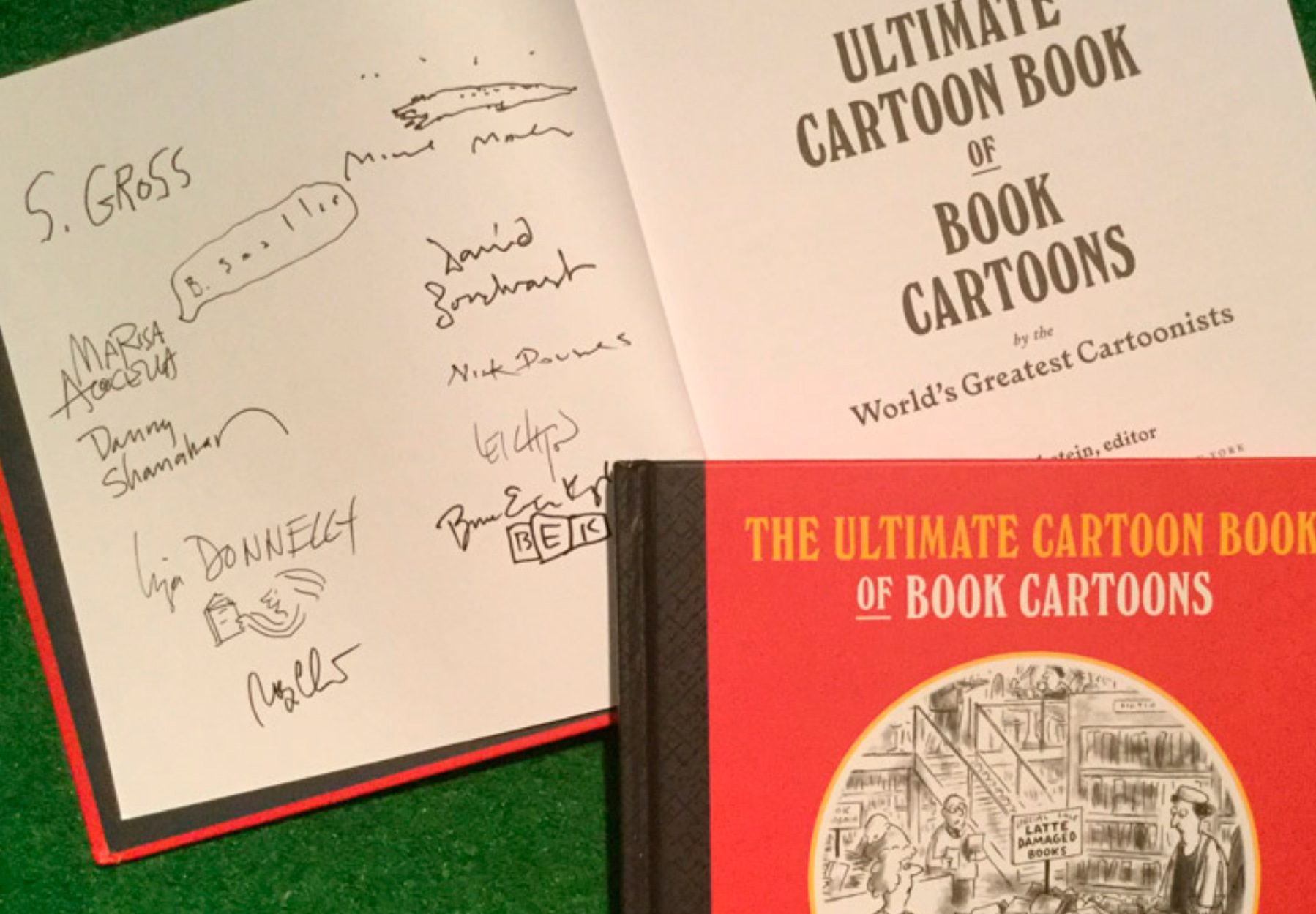 Sign up for CartoonStock news and you’ll be entered for a chance to win a copy of Bob’s first cartoon collection: The Ultimate Cartoon Book of Book Cartoons signed by Bob Mankoff, Roz Chast, Sam Gross, Danny Shanahan, Marisa Acocella, David Borchart, Robert Leighton, Bruce Eric Kaplan, Nick Downes and Bob Eckstein! A book- and cartoon-lover’s must-have. Winner will be randomly selected from all entries.
Sign up for CartoonStock news and you’ll be entered for a chance to win a copy of Bob’s first cartoon collection: The Ultimate Cartoon Book of Book Cartoons signed by Bob Mankoff, Roz Chast, Sam Gross, Danny Shanahan, Marisa Acocella, David Borchart, Robert Leighton, Bruce Eric Kaplan, Nick Downes and Bob Eckstein! A book- and cartoon-lover’s must-have. Winner will be randomly selected from all entries.
Find Everyone’s A Critic on Amazon.
Find all of Bob’s books on Amazon or better yet, Indie Bound, a supporter of bookstores.
Website: bobeckstein.com Follow Bob on Instagram, Twitter or Facebook

